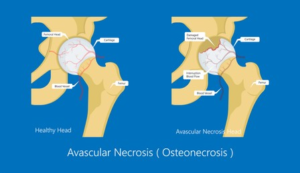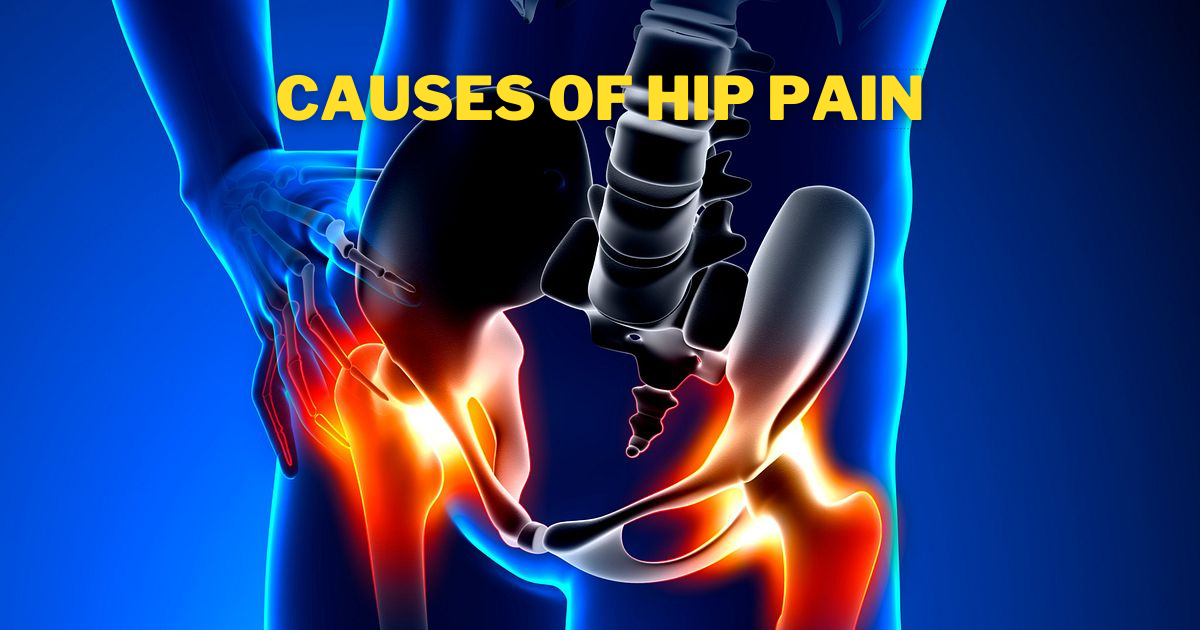What are the common causes of hip pain?
Pain can arise from the structures that are within the hip joint or from the structures surrounding the hip joint. The most important thing is to ask the patient to locate the site of pain.
Ask the patient to point at the site of pain. When the patient states that their hip hurts, it doesn’t mean that the pain is coming from the hip joint itself, so ask the patient to point at the site of the pain.
The pain can arise from structures that are within the hip joint or from structures surrounding the hip.
The hip joint is a weight-bearing joint. The joint consists of two main parts: the femoral head (ball) and the acetabulum (socket).
- The hip pain can be anterior hip pain (deep groin pain).
- The pain can be lateral hip pain.
- The pain can be posterior hip pain.
- The pain can be far posterior hip pain, coming from the sacroiliac joint and the lower spine.
Anterior hip pain is usually deep within the groin, and it can result due to arthritis of the hip.
Treatment:
Conservative treatment is:
- physical therapy
- anti-inflammatory medication
- possible injections
- Surgery (Is done in late cases, usually by a total hip replacement.)
It is usually diagnosed by clinical examination with a provocative test of flexion, adduction, and internal rotation. The diagnosis is confirmed by an MRI arthrogram.
Conservative Treatment:
- Therapy
- Anti-inflammatory medication
- Injections
Surgical Treatment:
- Provides good results.
- Usually done by arthroscopic debridement or repair of the tear.
Diagnosis:
A stress fracture is usually diagnosed by an MRI. The x-ray may be normal. Early diagnosis is important before the fracture displaces and gives a bad result.
Avascular Necrosis (AVN)
Treatment of avascular necrosis is usually surgical fixation of the fracture. Fixation of the fracture is usually performed utilizing screws. Femoral head replacement is done in rare, late cases.
Avascular necrosis means the death of a segment of the bone. When the blood supply of the femoral head is interrupted, a segment of the bone dies and becomes necrotic (femoral head will collapse).

Treatment for early stages of AVN without collapse of the femoral head includes decompression by drilling of this segment in the femoral head to bring a new blood supply to the area.
The vascularized fibular graft may be used also. In severe cases with the collapse of the femoral head (usually diagnosed by an x-ray), the treatment is usually total hip replacement.
Treatment of an inflamed bursa is usually the conservative treatment of physical therapy, anti-inflammatory medication, and injection. Surgical treatment by excision of the bursa is rarely done.
In case of chronic, resilient trochanteric bursitis, try to get an MRI to exclude a tear of the abductor muscles of the hip (gluteus medius and gluteus minimus muscle tear).

Posterior hip pain is usually due to piriformis syndrome. The sciatic nerve can be irritated from piriformis syndrome.
Treatment is:
- Usually physical therapy
- Stretching
- Anti-inflammatory medications
- Injections
Surgical treatment is usually rare:
- It is the last resort.
- It includes the release of the piriformis tendon and exploration of the sciatic nerve.
- It is done in cases that fail to improve with conservative treatment.
Posterior Hip Pain:
Far posterior pain may come from the sacroiliac joint or from the lower spine conditions. Sacroiliac joint (SI) problems are a challenging diagnostic and treatment entity.
There are a lot of clinical diagnostic examinations that can be used to diagnose sacroiliac joints (SI) problems such as the Faber test and others.
However, injection of the SI joint is probably the method to diagnose pain originating from the SI joint. If there is an improvement of the condition of the patient after injection of the SI Joint, then we will probably consider that the problem is in the SI joint.
The SI joint problems are usually underestimated and are unappreciated. Lower spine conditions can cause referred pain to the buttock and hip area.
In fact, symptoms of hip and lower spine conditions can overlap or both of them can coexist in the same patient. You have to separate pain from the hip from the pain that comes from the spine.
For more information talk to a healthcare provider.
If you have any questions about Hip Pain, please feel free and leave a comment.
Do share this blog with your friends and family!



